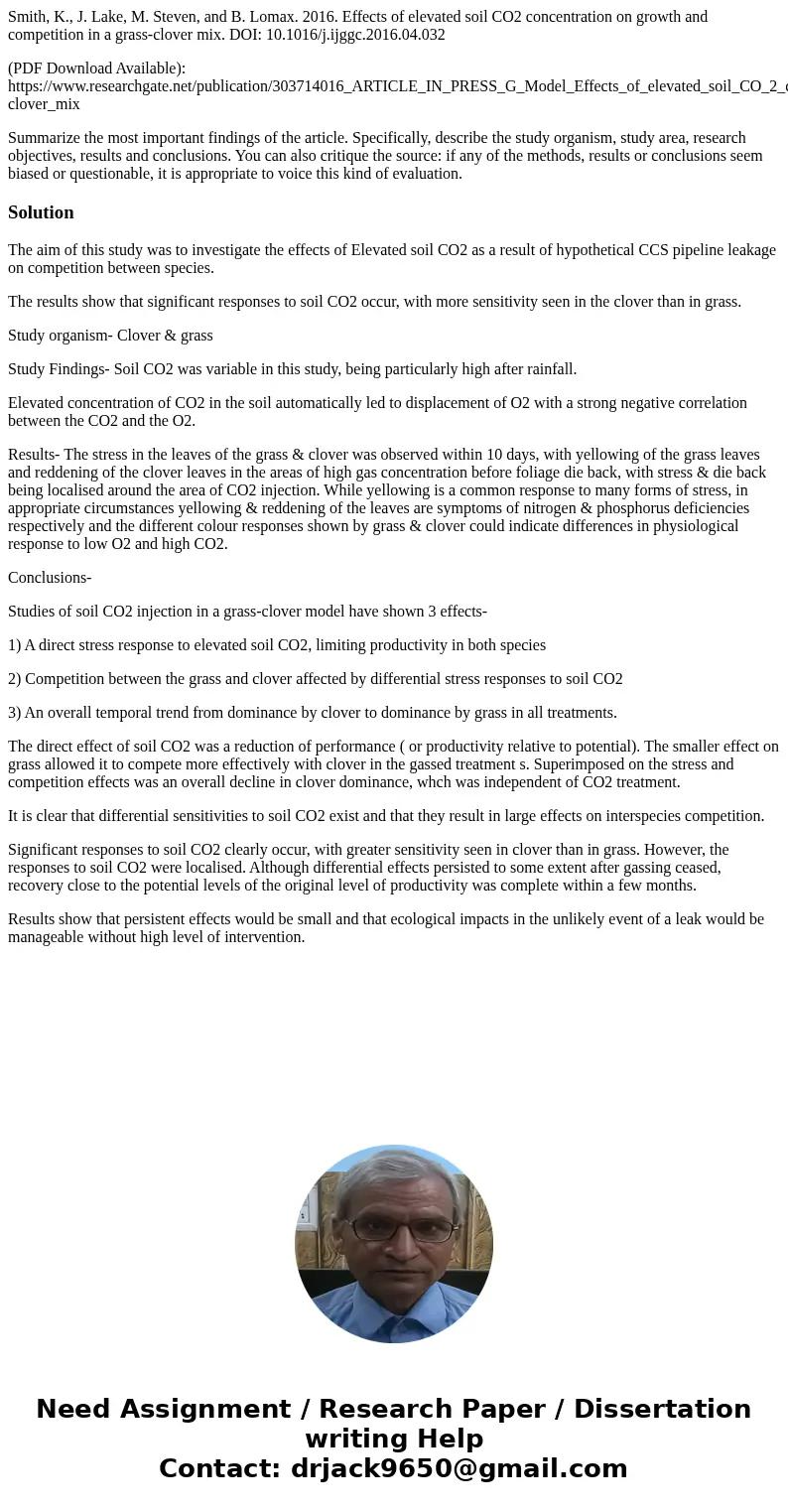Smith K J Lake M Steven and B Lomax 2016 Effects of elevated
Smith, K., J. Lake, M. Steven, and B. Lomax. 2016. Effects of elevated soil CO2 concentration on growth and competition in a grass-clover mix. DOI: 10.1016/j.ijggc.2016.04.032
(PDF Download Available): https://www.researchgate.net/publication/303714016_ARTICLE_IN_PRESS_G_Model_Effects_of_elevated_soil_CO_2_concentration_on_growth_and_competition_in_a_grass-clover_mix
Summarize the most important findings of the article. Specifically, describe the study organism, study area, research objectives, results and conclusions. You can also critique the source: if any of the methods, results or conclusions seem biased or questionable, it is appropriate to voice this kind of evaluation.
Solution
The aim of this study was to investigate the effects of Elevated soil CO2 as a result of hypothetical CCS pipeline leakage on competition between species.
The results show that significant responses to soil CO2 occur, with more sensitivity seen in the clover than in grass.
Study organism- Clover & grass
Study Findings- Soil CO2 was variable in this study, being particularly high after rainfall.
Elevated concentration of CO2 in the soil automatically led to displacement of O2 with a strong negative correlation between the CO2 and the O2.
Results- The stress in the leaves of the grass & clover was observed within 10 days, with yellowing of the grass leaves and reddening of the clover leaves in the areas of high gas concentration before foliage die back, with stress & die back being localised around the area of CO2 injection. While yellowing is a common response to many forms of stress, in appropriate circumstances yellowing & reddening of the leaves are symptoms of nitrogen & phosphorus deficiencies respectively and the different colour responses shown by grass & clover could indicate differences in physiological response to low O2 and high CO2.
Conclusions-
Studies of soil CO2 injection in a grass-clover model have shown 3 effects-
1) A direct stress response to elevated soil CO2, limiting productivity in both species
2) Competition between the grass and clover affected by differential stress responses to soil CO2
3) An overall temporal trend from dominance by clover to dominance by grass in all treatments.
The direct effect of soil CO2 was a reduction of performance ( or productivity relative to potential). The smaller effect on grass allowed it to compete more effectively with clover in the gassed treatment s. Superimposed on the stress and competition effects was an overall decline in clover dominance, whch was independent of CO2 treatment.
It is clear that differential sensitivities to soil CO2 exist and that they result in large effects on interspecies competition.
Significant responses to soil CO2 clearly occur, with greater sensitivity seen in clover than in grass. However, the responses to soil CO2 were localised. Although differential effects persisted to some extent after gassing ceased, recovery close to the potential levels of the original level of productivity was complete within a few months.
Results show that persistent effects would be small and that ecological impacts in the unlikely event of a leak would be manageable without high level of intervention.

 Homework Sourse
Homework Sourse